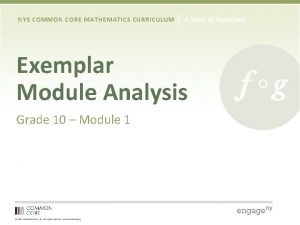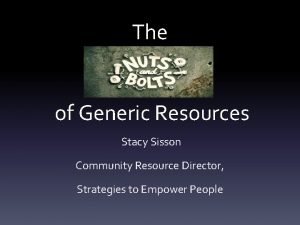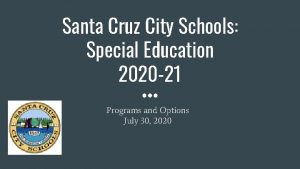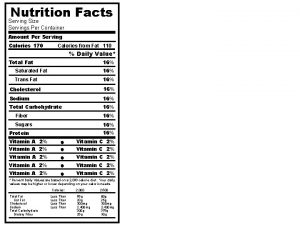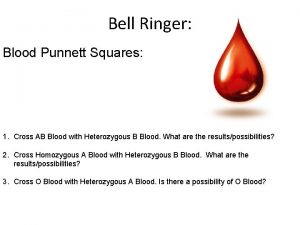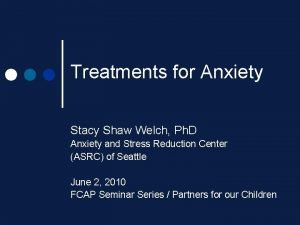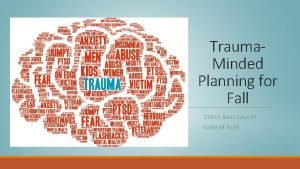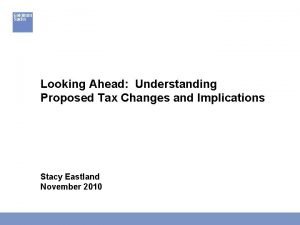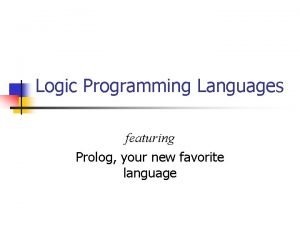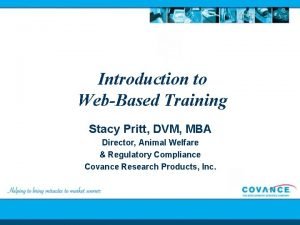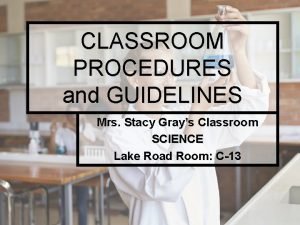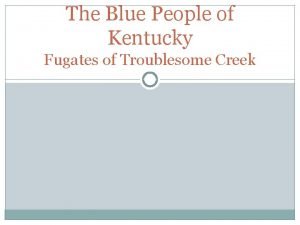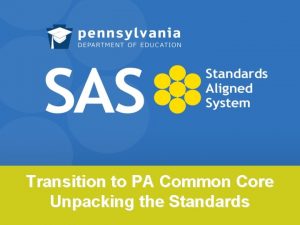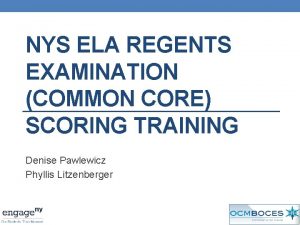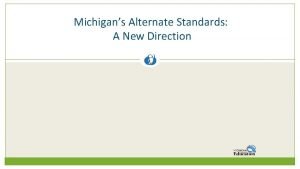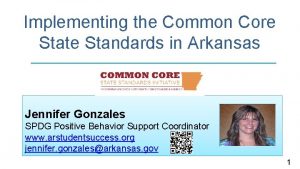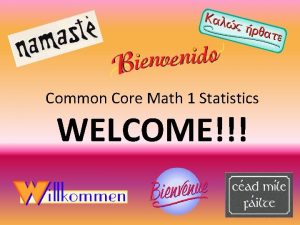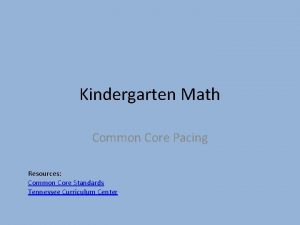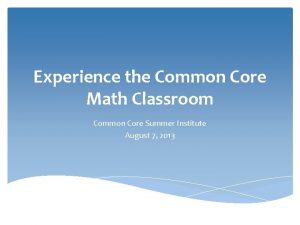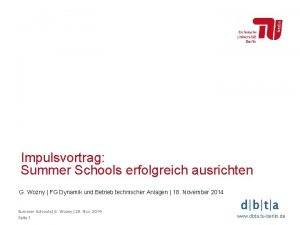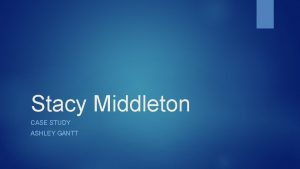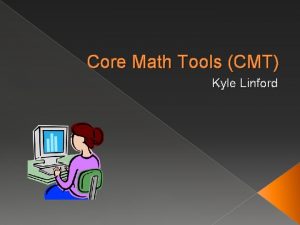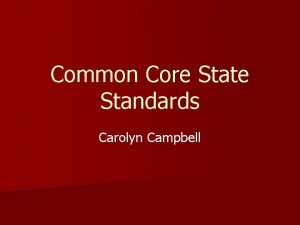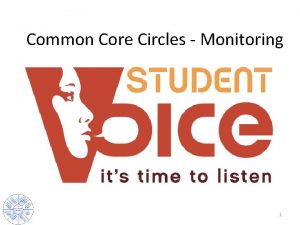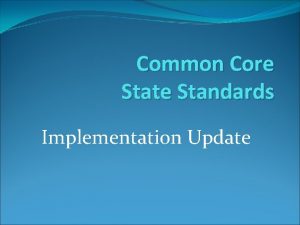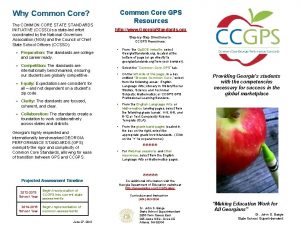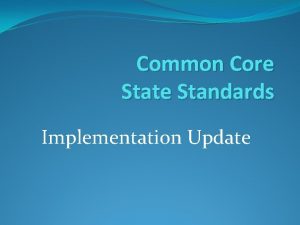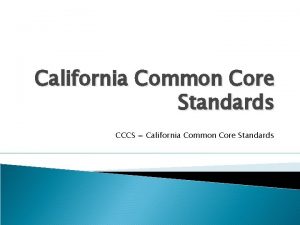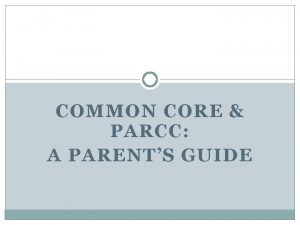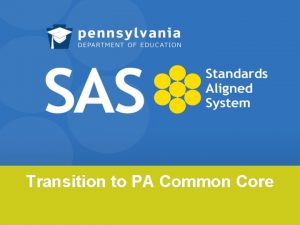Common Core Grades 6 8 Math Stacy Wozny































- Slides: 31

Common Core Grades 6 – 8 Math Stacy Wozny swozny@iss. k 12. nc. us February 18 th, 2013

Workshop Norms O Listen as a friend O Value differences O Maintain professionalism O Limit sidebar conversations O Limit use of technology O Participate actively O Work cooperatively

Warm-Up O Complete at least one of the three problems for your grade level on the handout. O What specific Common Core Standards are addressed by the problem you chose? O What mathematical practices are addressed by the problem you chose? Exploring Resources: NRICH (http: //nrich. maths. org)

www. nrichmaths. org

The challenges in generating rich mathematical tasks/problems are: O Being mathematical and sustaining the focus on mathematics O Believing that all students can engage in mathematical inquiry and are learning O Balancing the freedom, discussion and frustrations that go with rich activity with the need to support students to understand new ideas.

Goal of the Session O Explore and Experience tasks/problems that align with the Common Core Standards

What does it mean to understand mathematics? "Understand" is used in these standards to mean that students can explain the concept with mathematical reasoning, including concrete illustrations, mathematical representations, and example applications. Dr. James Williams, NCCTM, October, 2011

What does it mean to understand mathematics? Students who understand a concept can a. use it to make sense of and explain quantitative situations (see SMP 1, 2, and 4) b. incorporate it into their own arguments and use it to evaluate the arguments of others (see SMP 1, 3) Dr. James Williams, NCCTM, October, 2011

What does it mean to understand mathematics? Students who understand a concept can: c. bring it to bear on the solutions to problems (see SMP 1, 4, and 8) d. make connections between it and related concepts (see SMP 1, 2, 3, 4, 7, and 8) Dr. James Williams, NCCTM, October, 2011

Standards for Mathematical Practice 1. Make sense of problems and persevere in solving them 6. Attend to precision 2. Reasoning and 3. Explaining 4. Modeling and 5. Using tools Adapted from work of William Mc. Callum 7. Seeing structure and 8. Generalizing

Common Core Domains and Clusters 6 th Grade Ratios and Proportional Relationships 7 th Grade Ratios and Proportional Relationships 8 th Grade Functions • Understand ratio concepts and use ratio reasoning to solve problems. • Analyze proportional relationships and use them to solve real-world and mathematical problems. • Define, evaluate, & compare functions. • Use functions to model relationships between quantities.

Proportional Reasoning O Complete your grade level problem. O If time permits, complete another problem from a different grade level.

Proportional Reasoning O What specific Common Core Standards are addressed by your problem? O What mathematical practices are addressed by your problem? O How can you assess student understanding from this problem?

Common Core Domains and Clusters 6 th Grade Probability & Statistics 7 th Grade Probability & Statistics 8 th Grade Probability & Statistics • Develop understanding of statistical variability. • Summarize and describe distributions. • Draw informal comparative inferences about two populations. • Investigate patterns of association in bivariate data.

Age Gauge O Guess each person’s age as the slide show plays. O Record the name and guess on the handout.

Age Gauge O How can we determine who is the best guesser?

Age Gauge O Using this collected data, what questions might you ask your students?

Age Gauge Using your differences: O Find the measures of center and measures of variability for your data. O Who is the best guesser at your table and why? O What does the perfect guesser look like?

Age Gauge Representation of data: O With a partner, create a stacked box plot O Based on the results, determine the best guesser. O What does the representation look like for the perfect guesser?

Age Gauge Representation of data: O How can a scatter plot answer the question of who is the best guesser? O Make a scatter plot showing (actual age, guessed age) O What does the representation look like for the perfect guesser? O What is the linear equation for the perfect guesser?

Age Gauge Representation of data: O Informally fit a straight line to your data. O Informally write an equation for your line. O Interpret the slope within the context of the problem. O Write a statement about your guessing based on your scatter plot and equation.

Age Gauge Representation of data O Who is the best guesser in your group? O Write an argument defending your choice for the best guesser in your group.

Age Gauge O How could you facilitate a whole class comparison? O What mathematical practices are addressed by this task? O What specific content standards are covered in this task? O How does this task assess student understanding?

3 -ACT MATH O Act One Introduce the central conflict of your story/task clearly, visually, viscerally, using as few words as possible. O Act Two The protagonist/student overcomes obstacles, looks for resources, and develops new tools. O Act Three Resolve the conflict and set up a sequel or extension. From http: //blog. mrmeyer. com/? p=10285

3 -ACT MATH File Cabinet ACT 1: ACT 2: What do you want to know from ACT 1? What questions could be asked from ACT 1? ACT 3: The result From Andrew Stadel 3 -Act Math Tasks

3 -ACT MATH Taco Cart ACT 1: ACT 2: What information would be useful to know here? What questions could be answered from Act 1? ACT 3: The result From Dan Meyer 3 -Act Math Tasks

3 -ACT MATH Ticket to Ride ACT 1: What questions could be answered from Act 1? ACT 2: What information would be useful to know here? Link 1, 2, 3, 4, 5 ACT 3: The result From Dan Meyer 3 -Act Math Tasks

3 -ACT MATH O How could you use 3 -ACT Math in your classroom? O What are the advantages to using 3 ACT MATH? O What mathematical practices are demonstrated when students experience 3 -ACT MATH?

Common Core Domains and Clusters 6 th Grade Geometry 7 th Grade Geometry 8 th Grade Geometry • Solve real world and mathematical problems involving area, surface area, and volume. • Solve real world and mathematical problems involving angle measure, area, surface area, and volume. • Solve real world and mathematical problems involving volume of cylinders, cones, and spheres.

Geometry O Complete at least one of your grade level problems. O How does this problem assess student understanding? O What mathematical practices are addressed by this problem? O What specific content standards are covered in this problem?

Wrap-Up O Reflect on your instruction: How can you use problems/tasks to make the connection among the Standards for Mathematical Practice and the Common Core Standards? O On a post-it note: What do you need for future professional development?
 Ubiór tadeusza soplicy
Ubiór tadeusza soplicy Nys common core
Nys common core Utah core math standards
Utah core math standards 4th grade math jeopardy common core
4th grade math jeopardy common core Stacy sisson
Stacy sisson Stacy o'farrell santa cruz
Stacy o'farrell santa cruz Nutri grain nutritional information
Nutri grain nutritional information Eastern kentucky blue skin
Eastern kentucky blue skin Rubin stacy lynching wikipedia
Rubin stacy lynching wikipedia Promotional activites
Promotional activites Stacy johnson nottingham
Stacy johnson nottingham Stacy shaw welch
Stacy shaw welch Fau web controller
Fau web controller Stacy bacigalupi
Stacy bacigalupi Stacy
Stacy Stacy cooper patterson
Stacy cooper patterson Stacy eastland goldman sachs
Stacy eastland goldman sachs Stacy
Stacy Stacy pritt
Stacy pritt Stacy grays
Stacy grays Kentucky blue people
Kentucky blue people Dr. stacy jones
Dr. stacy jones Santiago beltrán rueda
Santiago beltrán rueda The brittle, rocky outer layer of earth
The brittle, rocky outer layer of earth Earth mantle definition
Earth mantle definition Basic layers of the earth
Basic layers of the earth Core rigidity
Core rigidity Pa common core standards
Pa common core standards Essential elements standards
Essential elements standards Ela regents rubric part 2
Ela regents rubric part 2 Essential elements michigan
Essential elements michigan Common core standards arkansas
Common core standards arkansas

